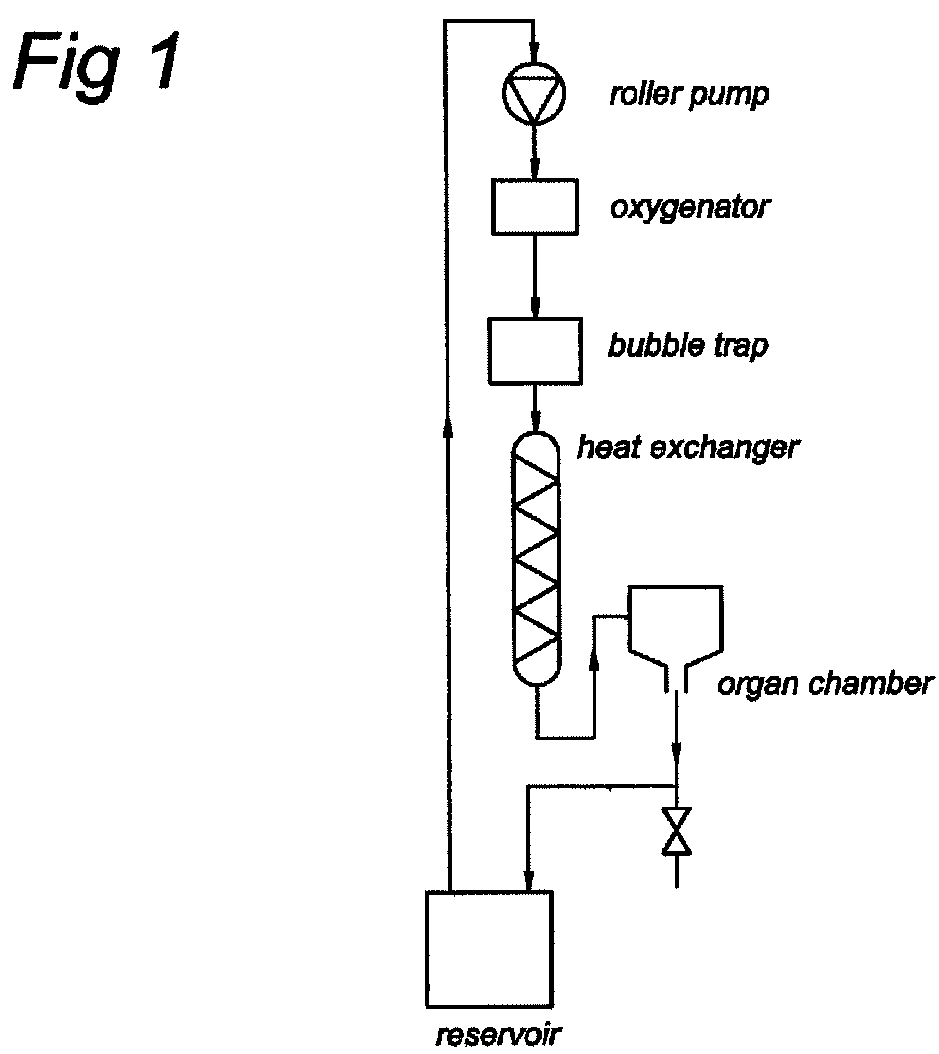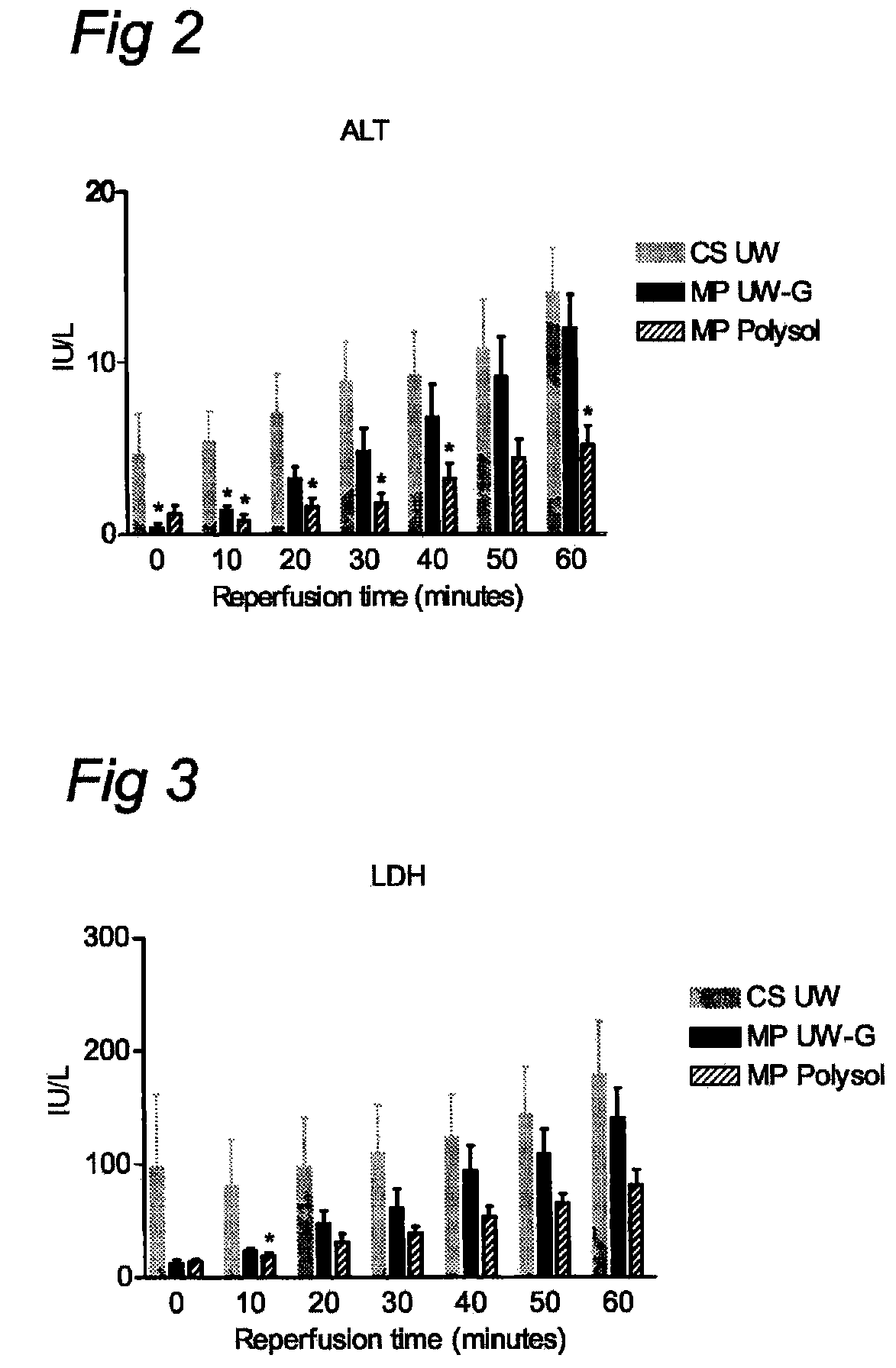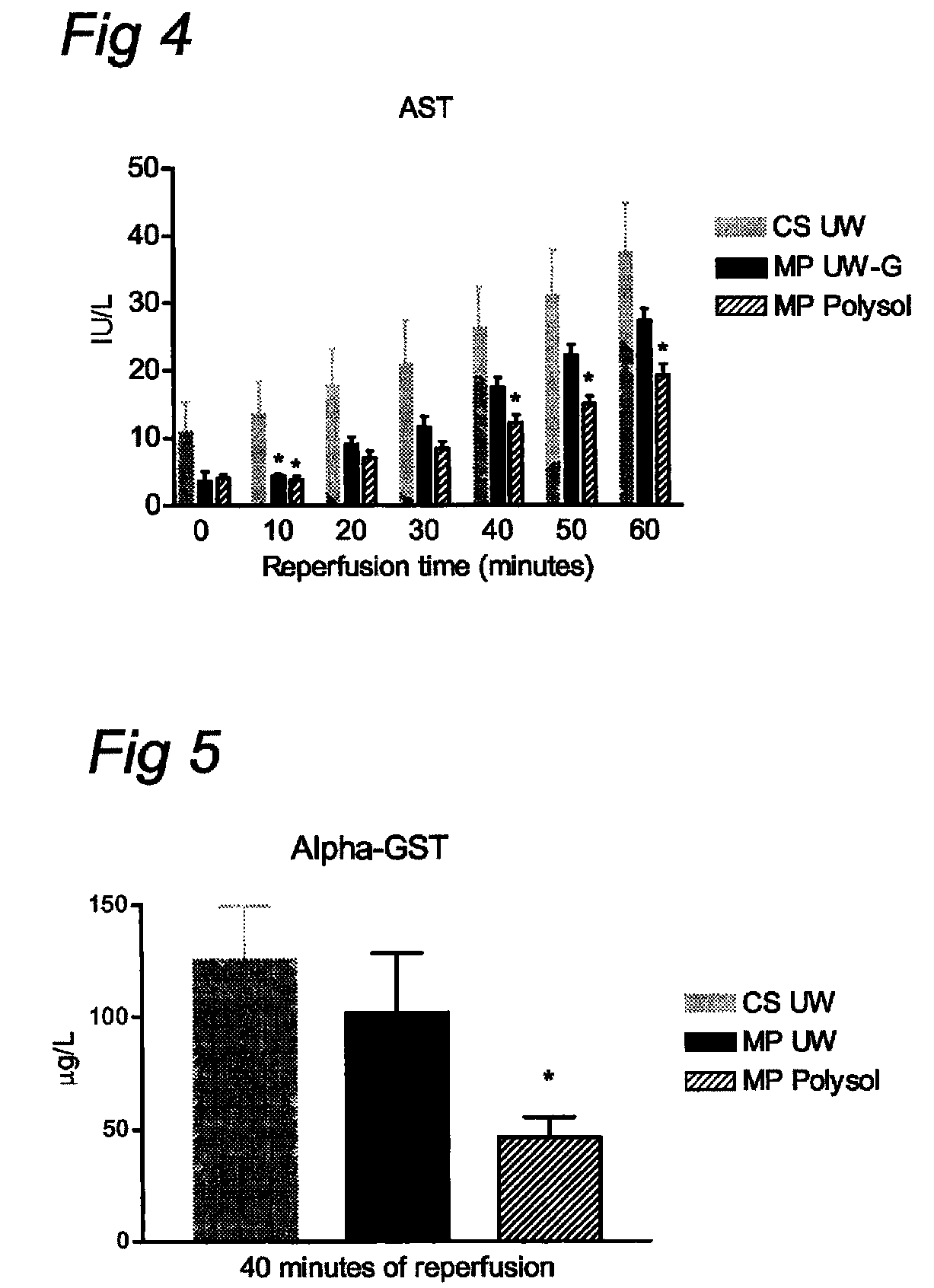Composition for cold preservation and perfusion of organs
- Summary
- Abstract
- Description
- Claims
- Application Information
AI Technical Summary
Benefits of technology
Problems solved by technology
Method used
Image
Examples
embodiments
[0028]In a first embodiment the present invention provides an organ preservation and perfusion solution based on tissue culture media, to provide a sufficient amount of vitamins and nutrients to the organ in a well balanced way. Many tissue culture media are known in the art and are well documented and commercially available from various suppliers. Minimal Essential Medium Eagle (MEM), Dulbecco's Modified Eagle Media (DMEM), RPMI 1640 Media, DMEM / F-12 Media, Hams F-10, Hams F12, Iscove's Modified Dulbecco's Medium, Leibovitz's L-15 Media and Minimum Essential media with Earle's Salts and Williams E media (Current Protocols in cell biology, www.interscience.wiley.com) may be used as a basis for the organ preservation solution according to the current invention, but also other cell or tissue culture media known in the art may be used. In particular, Williams E is well suited and preferred for an organ preservation and perfusion solution according to the current invention. Tissue cultu...
example 2
[0064]The aim of this example was to assess machine perfusion (MP) of rat livers using POLYSOL-1, an organ preservation solution according to the current invention and described in example 1, to compare results with machine perfusion using POLYSOL and UW-G, both in relation to the gold standard cold storage (CS) method using UW. To this end, both preservation methods and MP solutions were assessed in the isolated perfused rat liver model (IPRL) from heart beating donors.
[0065]Materials and Methods
[0066]Animals and Surgery:
[0067]Male Wistar rats (Harlan, The Netherlands), weighing 350 g (+ / −50 g) were used as liver donors. The animals were housed under standardized conditions with a 12 / 12 h dark / light circle and ad libitum access to water and a standard pellet chow (Hope Farms, Woerden, The Netherlands), until directly prior to the experiment. All animals were handled in accordance to Dutch regulations and principles of animal care, under approval of the Animal Ethical Committee of t...
example 3
[0106]The aim of this example is to compare preservation of the non-heart-beating donor (NHBD) rat liver with CS using UW, MP using UW-G and MP using Polysol-1.
[0107]The historical preservation method of choice for the optimal donor liver is cold storage. Recent studies have however shown that preservation by continuous hypothermic machine perfusion (MP) results in less liver damage and better liver function after 24 hours preservation (Kim J S et al., Transplant Proc 1997; 29(8):3452-3454, Southard J H et al, Transplant Proc 2000; 32(1):27-28, Xu H. et al., Transplantation 2004; 77(11):1676-1682.) (4-6) The advantages of MP can be found in the supply of nutrients and oxygen to the donor organ, the possibility of viability assessment during preservation and before implantation. Another advantage can be found in the possible resuscitation of NHBD organs. These ischemically damaged organs are difficult to preserve by CS, resulting in liver damage and decreased liver function after pre...
PUM
 Login to View More
Login to View More Abstract
Description
Claims
Application Information
 Login to View More
Login to View More - R&D
- Intellectual Property
- Life Sciences
- Materials
- Tech Scout
- Unparalleled Data Quality
- Higher Quality Content
- 60% Fewer Hallucinations
Browse by: Latest US Patents, China's latest patents, Technical Efficacy Thesaurus, Application Domain, Technology Topic, Popular Technical Reports.
© 2025 PatSnap. All rights reserved.Legal|Privacy policy|Modern Slavery Act Transparency Statement|Sitemap|About US| Contact US: help@patsnap.com



